Exchange Listings & Token Price Impact: Analysis
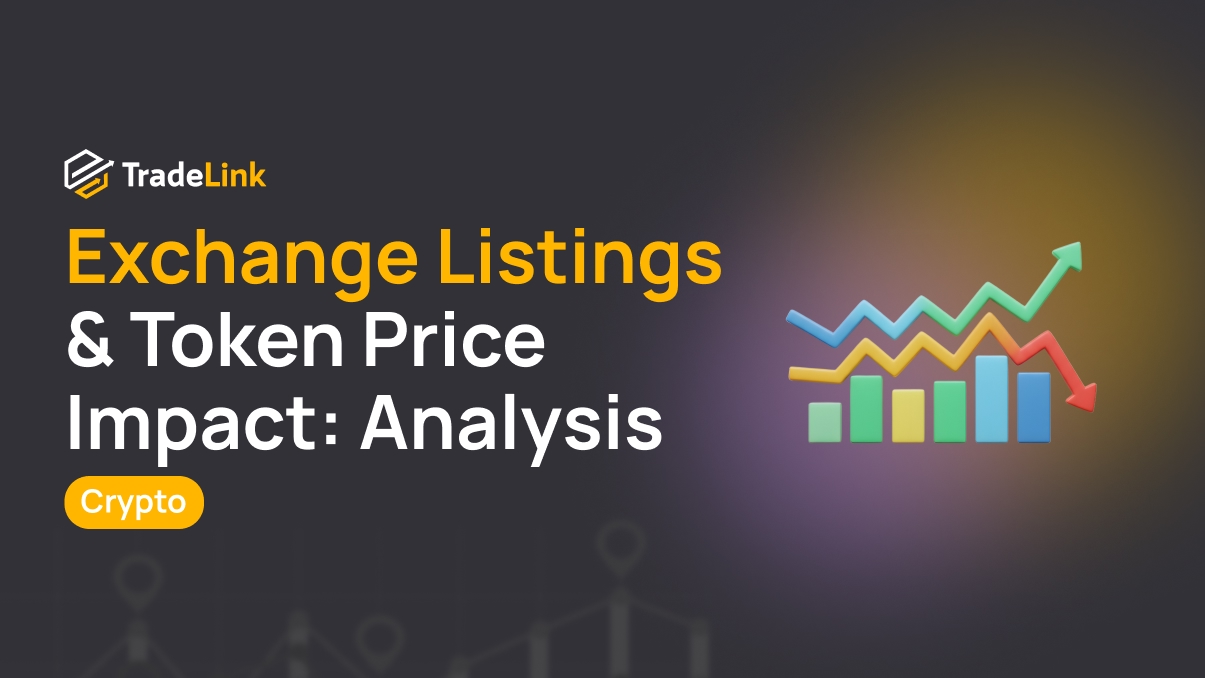
Contents
- Introduction
- What Is Token Listing on an Exchange
- How Listing on a Major Exchange Affects Token Price
- Why Listings on Smaller Exchanges May Not Have a Significant Effect
- The Short- and Long-Term Impact of Listing on Token Price
- Risks and Challenges Associated with Token Listings
- Examples of Successful and Unsuccessful Listings
- Conclusion
Introduction
Cryptocurrencies do not trade independently. To buy or sell, a token must be listed on an exchange. This process is called listing.
An exchange is a platform where users conduct trades. Without access to such a platform, a token remains in the shadows. Only the developers and early participants know about it. Once a token appears on an exchange, it gains visibility. It gets a price, trading volume, and market history, which makes the asset “alive” in market terms.
Listing is essential for both the token team and investors. Developers gain new users, and investors can conveniently buy or sell the asset. The larger the exchange, the more interest there is in the token.
What Is Token Listing on an Exchange

The Listing Process: What It Involves
Listing begins with applying. The token team approaches an exchange and proposes listing their asset. The exchange reviews the project, and the token is added to the platform if everything checks out.
Next comes the technical part. The exchange configures trading pairs, tests wallet functionality, and ensures security. After that, the trading start date is set. The exchange then publishes a launch announcement.
Listing Requirements
Each exchange has its conditions, but there are several standard rules. The token must provide utility. The project should have a working product, not just an idea. The team must communicate its goals and plans openly. It is also vital for the project to have an active community—this shows interest.
Exchanges pay special attention to the legal side. If a token is associated with fraud or violates regulations, it won’t be accepted. Exchanges don’t want to risk their reputation.
In return, a project gains access to a large audience and a high level of trust. Listing on major exchanges often becomes a turning point: once listed, tokens attract investors, and the project gets a chance for rapid growth.
The Difference Between Primary and Secondary Listings
A primary listing is the token’s first appearance on an exchange. Before that, it couldn’t be bought or sold freely. This market debut often draws strong interest, and prices frequently experience sharp movement in the early days.
A secondary listing is when a token gets added to another exchange after being traded elsewhere. This also matters, as it opens up new purchase channels. While secondary listings can boost demand, their impact on price is usually less intense than that of a primary listing.
How Listing on a Major Exchange Affects Token Price
Increased Liquidity: How Listing on Major Exchanges Improves Access for Traders
When a token is traded on only one or two small platforms, buying it is difficult. Few participants mean slow trades and a wide spread between bid and ask prices.
A significant exchange solves this. It brings more users, more orders, and higher volumes. People can buy and sell without drastically affecting the price — this is liquidity.
Strong liquidity attracts major players. Institutional investors, funds, and large traders notice such tokens. This can trigger significant growth.
The Psychological Effect: How Listing News Can Influence Perception
News of a listing often sparks excitement. Users start buying the token on other platforms before trading begins, anticipating a price increase.
Why does this happen? Exchanges act as filters. If a token has passed due diligence and landed on a reputable platform, it is seen as “worthy.” This triggers trust. If an exchange supports the token, it must have potential.
This effect increases interest, and the price rises even before the launch. Sometimes the rise continues afterwards, mainly if demand stays strong.
Price Impact Examples from Popular Tokens
The Impact of Listings on Token Prices: Examples of Popular Tokens
- Pi Network (PI) Token
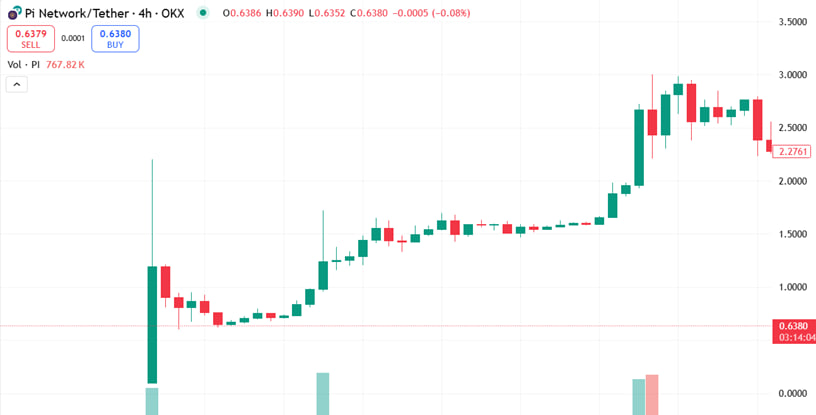
For a long time, the Pi token remained within a closed system. Users mined it through a dedicated app but were unable to sell or buy it on exchanges. Everything changed in March 2025, when the token was listed on public trading platforms for the first time.
After its debut on the OKX exchange, the Pi token traded at around $1. Over the next few days, its price surged to $3. Although the price later dropped due to heavy selling pressure from users, the initial listing gave the token a powerful boost. It marked the beginning of real trading and brought massive attention to the project.
- Solayer (LAYER) Token
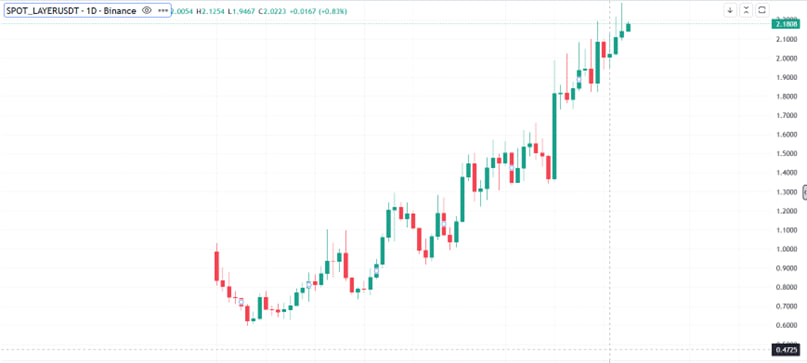
Solayer is a project built on the Solana blockchain. Its primary goal is to alleviate network congestion and facilitate faster and more cost-effective transactions. In February 2025, the team launched its token called LAYER.
The token initially traded for less than $1. However, demand was high, especially from investors who had been closely monitoring the project for an extended period. Within the first two months, the price rose from $0.60 to $1.40. Today, the token is trading above $2.
This growth doesn’t seem accidental. The team had prepared for the launch. The project had an active community, a clear purpose, and support from other companies in the crypto space.
Why Listings on Smaller Exchanges May Not Have a Significant Effect
Limited Trading Volume
Small exchanges rarely attract large numbers of traders. Few assets are traded, and transactions proceed slowly. A token might get listed, but trading volume remains low. This means demand is weak, and price movement is minimal.
When a few people trade a token, its price stagnates or fluctuates slightly. Sometimes trading halts entirely. In such cases, investors hesitate to engage with the project. Seeing no momentum, they move on to more active tokens.
Low Liquidity and Limited Audience
Liquidity reflects how easily a token can be bought or sold. On small exchanges, this often becomes an issue. Traders may wait long for a buyer or seller, disrupting normal trading.
Small platforms also have limited reach. Listing news may go unnoticed. Without trader attention, the token’s price does not move. That’s why listings on weak exchanges rarely spark growth.
The Short- and Long-Term Impact of Listing on Token Price
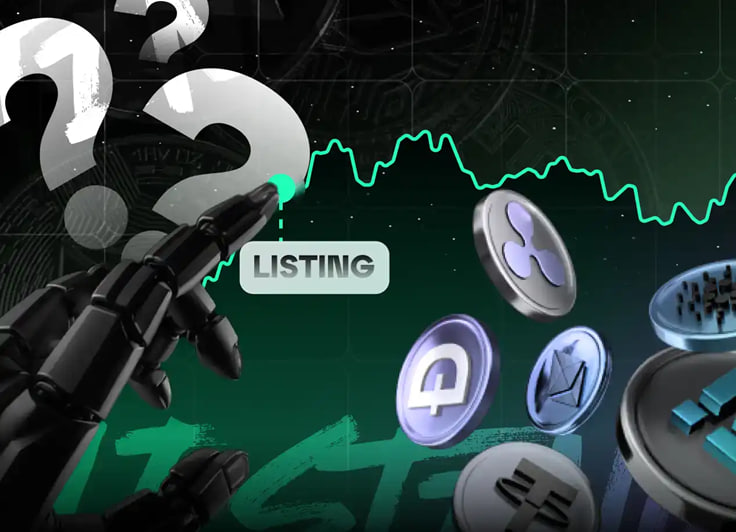
Short-Term Swings: What Happens Immediately After Listing
A token’s price often becomes volatile in the first hours after listing. Many purchase as early as possible, creating strong demand and increasing prices. Sometimes, this rally lasts for several days.
But sharp gains rarely last. When traders start taking profits, selling begins, leading to a drop. The price may return close to pre-listing levels or even fall below them.
Long-Term Trends: How Listing Affects a Token’s Fundamentals
Strong projects benefit from listing beyond a price increase. Communities start discussing them. They appear in reports and top-token lists. This attracts new users and partners.
Listing on a major exchange can also enhance the token’s reputation. Investors begin to trust the project more. This helps attract funding and maintain steady growth. However, this is only possible if the project has real goals and continues developing after going public.
Risks and Challenges Associated with Token Listings
Market Saturation: How Frequent Listings Can Impact Prices
If exchanges add too many tokens quickly, attention to each asset drops. Users don’t have time to study all the new offerings. The constant stream of new projects tires traders, causing them to ignore even promising ones.
This saturation reduces growth potential. A token might be overlooked. It won’t gain proper support during listing, even with a strong idea. This slows the project’s development and may damage its launch.
Price Manipulation: Examples of Listings Used for Market Scams
Sometimes, listings become tools for deception. A project team or major players may buy the token early to create hype. Once listed, they sell it at an inflated price. Newcomers buy in, unaware that the rise is artificial—afterwards, the price crashes.
This often happens on small or obscure exchanges where oversight is weaker. One notable case was the Squid Game (SQUID) token. It appeared during the hype around the popular series. The price skyrocketed. People bought the token thinking it was affiliated with Netflix. At its peak, SQUID reached over $2,800. Then the developers disappeared, and the token collapsed to nearly zero.
Such schemes sometimes happen even on large exchanges. Binance, for example, once investigated the SUSHI token after its founder unexpectedly sold a large portion of tokens post-launch. The community reacted strongly, and the price plummeted. Although the developer later returned the funds and the project continued, the incident left a bad impression.
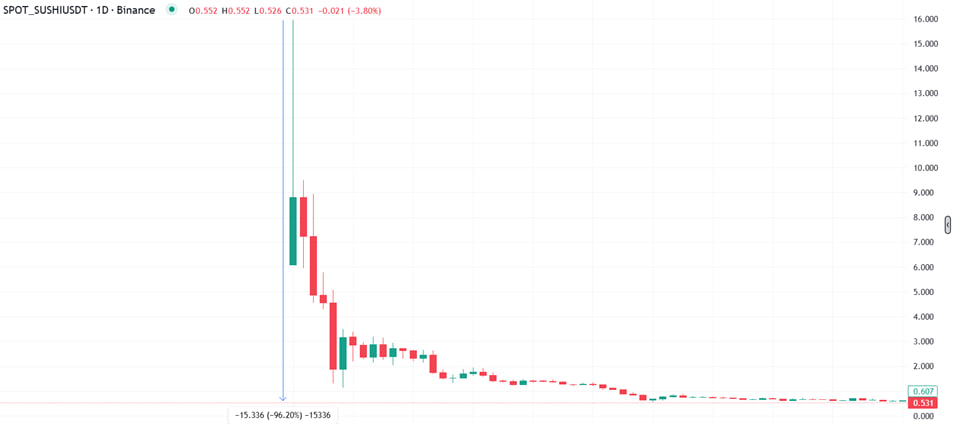
These cases show that listing is not a guarantee of safety. It is crucial to research projects and not get carried away emotionally. Even reputable exchanges can list tokens with risks.
Examples of Successful and Unsuccessful Listings
Successful Listings: How Major Exchanges Drove Price Changes
-
SUI Token
On May 3, 2023, the SUI token was listed on Binance and other major exchanges. Before listing, it was part of Binance Launchpool, where users earned tokens at around $0.10. After trading began, the price surged. In the first hour on Binance, SUI reached up to $1.84 — nearly an 18x increase. First-day trading volume exceeded $1 billion. The project quickly gained attention on social media and analytics platforms. This launch helped SUI become one of the most talked-about cryptocurrencies of May 2023.
-
APT Token
APT is the token of the Aptos project. The listing occurred in October 2022. Trading began simultaneously on several major exchanges, including Binance. The price reached $13.73 in the early hours, despite being valued at $1–$2 in over-the-counter markets. The impressive growth and trading volume quickly reached hundreds of millions of dollars. Interest in the project soared, and Aptos became one of the standout new players that year.
Unsuccessful Listings: Tokens Whose Prices Did Not Rise or Fall Post-Listing
-
BIO Token
In January 2025, the BIOUSDT token was introduced to the market. Its initial price was $0.8144. Many people expected the project to grow, but that didn’t happen. Just weeks after launch, the price began to fall sharply. At the time of writing, the token is worth only $0.05369 — a drop of more than 90%.
There could be several reasons for such a crash. Most likely, the project lacked a clear purpose, an active community, and the trust of traders. People didn’t see any reason to hold the token, so they started selling it off in large volumes. The market quickly showed that without a strong idea and a capable team, a token can’t survive. Today, BIOUSDT is considered one of the biggest failures among 2025 listings.
-
COOKIE Token
Another example is the COOKIE token, which also launched in January 2025. The starting price was $0.5809. But almost immediately after the listing, the token began to lose value. Not long after, the price dropped to $0.1041 — an 82% decrease from its initial level.
The project likely wasn’t ready for launch. It lacked a clear goal, a strong team, and community support. There was little to no presence in the media or social networks. People didn’t understand why they should buy the token and quickly began to sell it off. The market didn’t forgive this weakness. As a result, COOKIE rapidly lost momentum and ended up among the year’s most unsuccessful launches.
Conclusion
Listing can give a token a powerful start. It makes a project visible, attracts new users, and improves trading conditions. But simply going public is not enough.
A strong project must support the token. Without that, interest fades quickly, and prices drop. One shouldn’t expect magical growth, either. Sometimes, listing has little impact, especially on weaker exchanges or oversaturated markets.
A good outcome is possible when the team works on the product, supports the community, and avoids misleading traders. Then listing becomes a step forward, not just a loud but fleeting event.